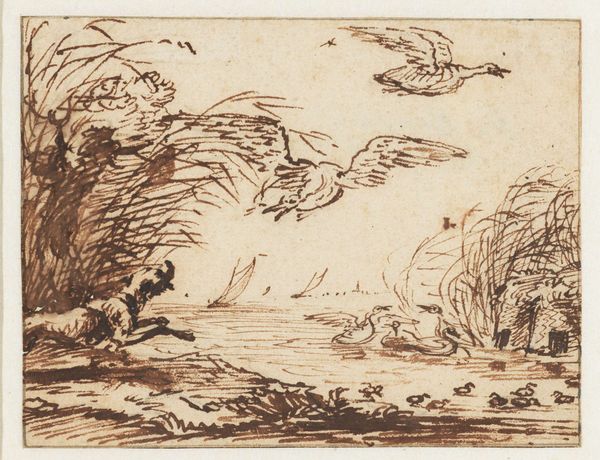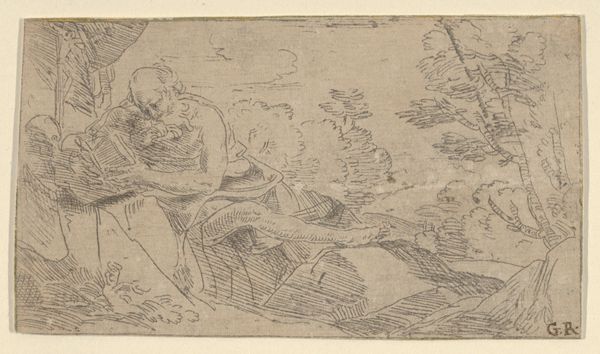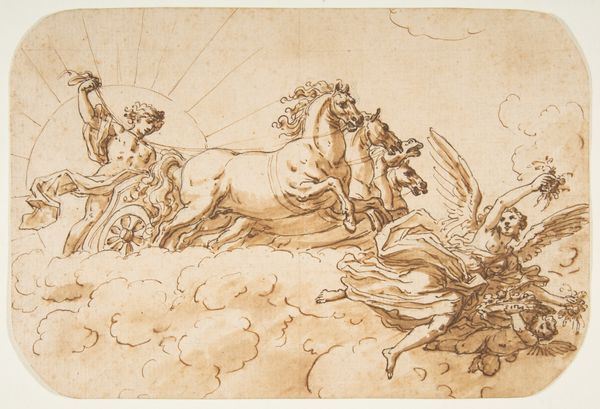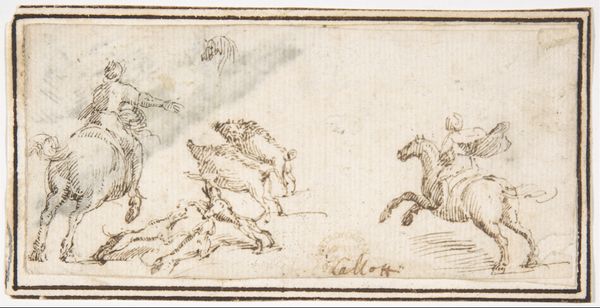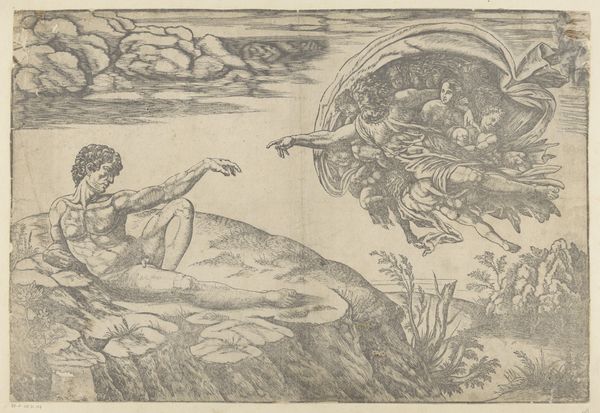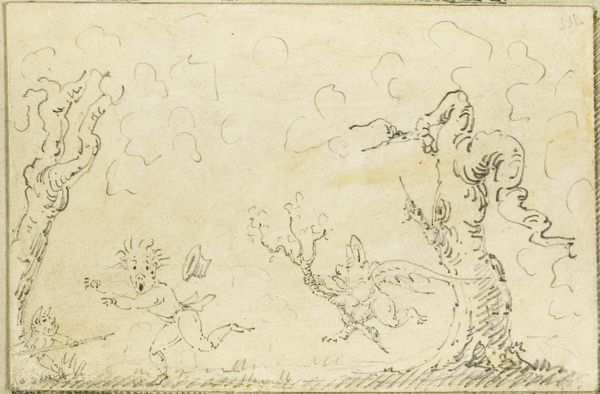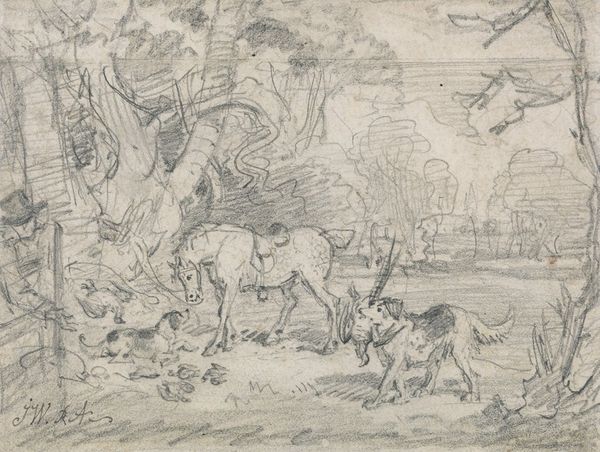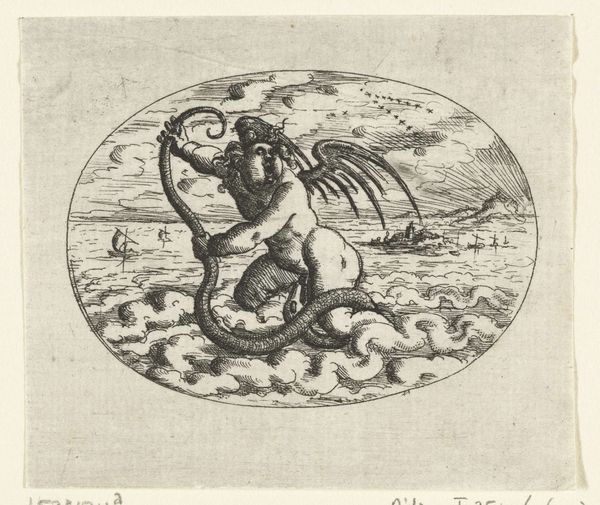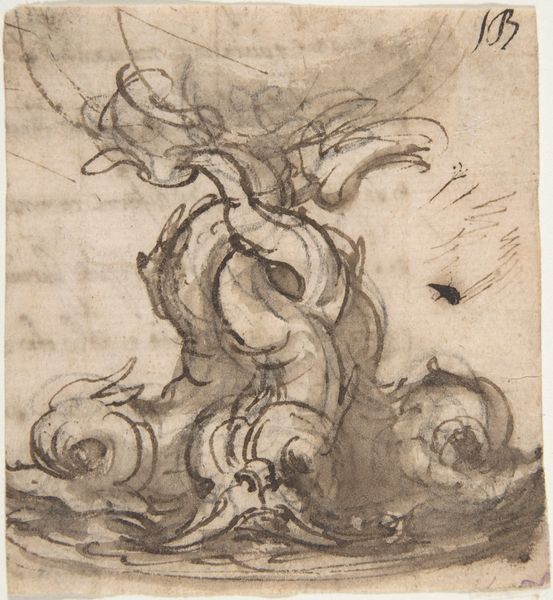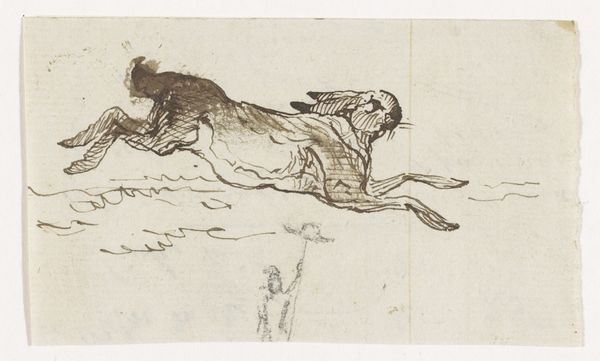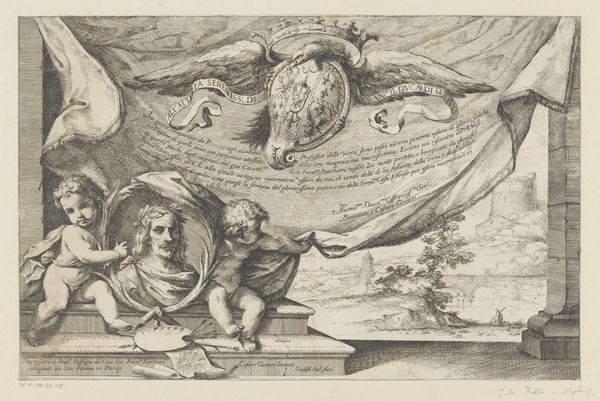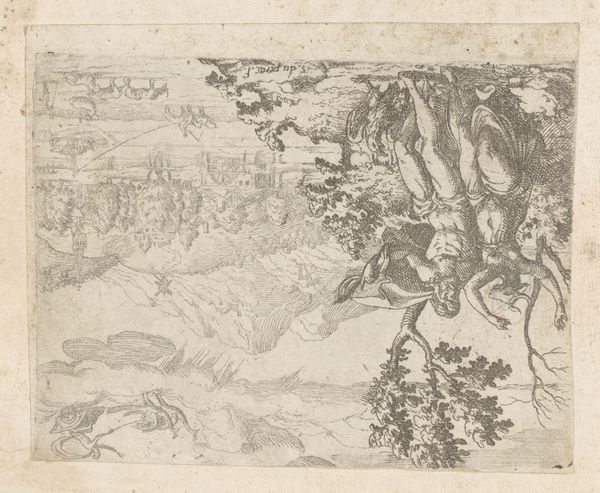
drawing, print, ink
#
drawing
#
ink drawing
#
allegory
#
baroque
# print
#
landscape
#
figuration
#
ink
#
history-painting
Dimensions: sheet: 4 1/16 x 11 7/16 in. (10.3 x 29 cm)
Copyright: Public Domain
Curator: I’m drawn in by the ethereal, almost dreamlike quality of this work. Editor: Indeed! This is Hans Jakob Ebelmann's "An Allegory of Fortune with Two River Gods," created in 1624. It’s an ink drawing—a print, really—now held here at the Met. The lines are so fine. Curator: There’s a dynamic energy in the composition. I’m intrigued by how the material contributes to the overall sense of fluidity, almost mimicking the water it depicts. Did he employ specific tools or techniques that were common at the time? Editor: Ebelmann was working within the conventions of the Baroque period, a time when allegory was incredibly popular, deeply entwined with political and social messaging. Consider how prints circulated—multiple impressions shaping public perceptions. These weren't simply artworks; they were potent disseminators of ideas. Curator: So, the print medium allowed for wider consumption of his allegorical imagery... Fortune is clearly the focal point, but what about the labour in reproducing it? How does it challenge that traditional high art versus craft divide, reflecting the economic context of the period? Editor: Precisely! The act of replicating it changed its perceived value and reach. Ebelmann's Fortune becomes more than just an aesthetic object, she's a commodity in herself. Curator: Looking at the figures themselves, the river gods bookend this maritime scene, containing the chaotic movement within. They add a level of stability, anchoring the capriciousness of fortune to something more grounded. Editor: And this all plays out on paper, readily available as a material itself. Imagine its availability relative to, say, fresco. It directly impacts who could own and engage with these ideas of fortune and fate. Curator: A striking perspective on material impacting consumption! It certainly pushes me to rethink assumptions around fine art and access in the Baroque era. Editor: Seeing it like that underscores the socio-political power art wielded. The artwork, the labor and production and reproduction of the print become wrapped together.
Comments
No comments
Be the first to comment and join the conversation on the ultimate creative platform.
